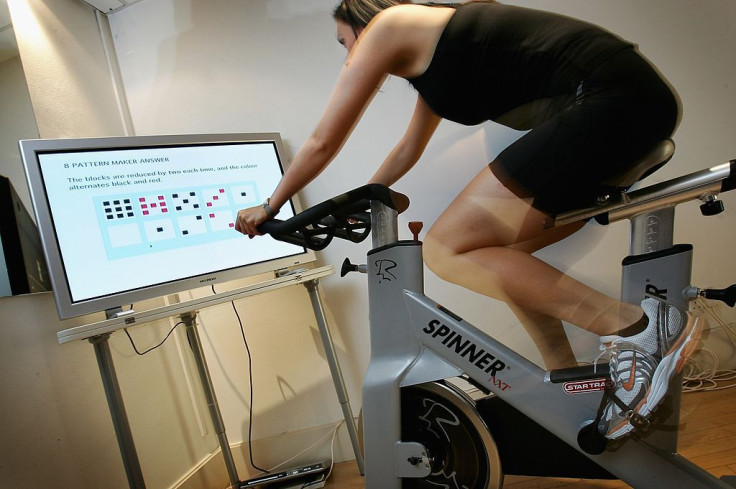Gender Gap In Sports Research: Are Women Excluded Because Of Their Menstrual Cycles?

Women’s menstrual cycles do more than keep them out of work on days the cramps and pain are hard to manage — they keep women from being considered in clinical medicine, too.
There are an almost equal amount of men and women in science, technology, engineering, and mathematics fields, but when it comes to research studies and trials, something gets lost in translation. The medical science discovered in the past century has been largely based on men, something emergency medicine doctor Alyson McGregor dug into for a 2014 TED Talk. One of her references was a report from the Government Accountability Office which showed that side effects in women were the cause of 80 percent of drug withdrawals. Given the lengthy timetable of drug making, it’s disheartening to hear women aren’t considered until years after the fact.
So the recent editorial published in The British Journal of Sports Medicine, which McGregor helped write, didn’t exactly come as a shock: In 1,382 sports and exercise medicine studies conducted between 2011 and 2013, women only represented 39 percent of the roughly six million participants. The reason being the fluctuating levels of estrogen and progesterone during menstrual cycles.
Historically, the authors wrote, women were excluded from research to avoid potential complications certain scientific methods might pose to unborn fetuses, especially if they wanted to participate in drug trials. A woman’s hormones on her period were also taken into consideration so as not to skew results of certain studies. The practice may be well-intentioned, but it still frustrates editorial author Georgie Bruinvels, a graduate student in the University College London’s Division of Surgery and Interventional Science.
There’s a massive gap in knowledge and understanding, she told Medical Daily. “There’s nothing out there.”
In researchers’ eyes, the hormone factor turns women into an extra physiological variable, alongside body fat and VO2max — the maximum amount of oxygen an individual can use during an intense workout. It’s hypothesized that these variables affect performance and, in the case of women, produce less meaningful results. But these are just hypotheses, Bruinvels said.
As time passed, these types of studies began to include women in the follicular phase of their menstrual cycle, when their hormone levels are lowest. This helped scientists minimize the possibly complicating effects of hormones on the study results. And yet, making this minimal effort still “leaves much ambiguity around how such hormones may influence the unique physiological processes in women, from blood pressure to substrate metabolism,” the authors wrote. They cited a previous report that found an estimated 41 percent of exercising women believe their menstrual cycle has a negative impact on performance — but without any women enrolled in related studies, there’s little evidence as to why.
A Turkish study of 241 elite athletes supports this idea: Researchers found that nearly three out of four women said their cycle made them feel crappy during a workout. However, according to Shape, regular exercise helps some women relieve period pain, improving mood, fatigue, and their quality of sleep. Again, researchers can’t explain these underlying mechanisms of pain increase and reduction if male studies are the only ones forging forward.
With regard to menstrual cycles in general, Bruinvels, whose graduate work focuses on iron metabolism and heavy menstrual bleeding, says there’s still “such a taboo.” She added that people remain hesitant to talk about periods and blood, even though they’re part of a natural process.
So far her research shows we need a better understand of female physiology, so that we can define the positive and negative effects menstrual cycles have on athletic performance. Bruinvels said there needs to be greater awareness, and just a general appreciation that this is an issue in the first place.
Source: Bruinvels G, Burden RJ, McGregor AJ, et al. Sports, Exercise, and the Menstrual Cycle: Where Is the Research? British Journal of Sports Medicine. 2016.
Published by Medicaldaily.com



























